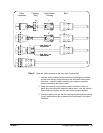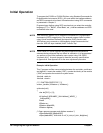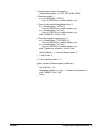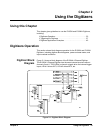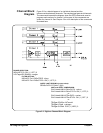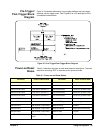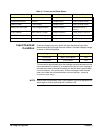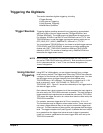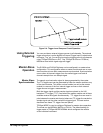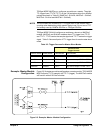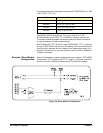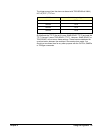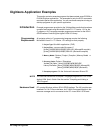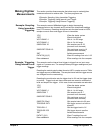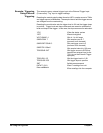
Using the Digitizers 37Chapter 2
Triggering the Digitizers
This section describes digitizer triggering, including:
• Trigger Sources
• Using Internal Triggering
• Using External Triggering
• Master/Slave Operation
Trigger Sources Triggering digitizer readings across all input channels is accomplished
with one or both of the two trigger sources (TRIGger:SOURce1 and
TRIGger:SOURce2). The trigger event can be different for each source.
For example, SOURce1 can be EXT and SOURce2 can be TTLT0. Use
TRIG:SOURce<n> to set the trigger source event options which can be
OFF | BUS | EXT | HOLD | IMMEDIATE | INTernal1-4 | TTLT0-7.
You must execute TRIG:SOURce<n> two times to set both trigger sources
(TRIG:SOUR1 and TRIG:SOUR2). At power-up and after resetting the
module with *RST, TRIG:SOUR1 defaults to IMM and TRIG:SOUR2
defaults to HOLD. The number of readings set by SAMPle:COUNt are
taken after the trigger event occurs.
NOTE Do not confuse TRIG:SOUR1 as being associated with only channel 1
(as well as TRIG:SOUR2 with only channel 2). Both sources are common
to ALL channels and the “1” and “2” are not channel designators but
“source” designators.
Using Internal
Triggering
Using SCPI or VXIplug&play, you can trigger internally from a voltage
level from any channel. The trigger level is set using TRIG:LEVel<channel>
<voltage> for the channel you want to generate the trigger event. You then
set the trigger source to trigger internally from that channel using
TRIG:SOURce<n>INT<channel>. For example, to trigger from a 11.5V
level on channel 2, send VOLT2:RANG 16; TRIG:LEV2 11.5;
TRIG:SOUR INT2. Figure 2-1 shows the relationship of the trigger level to
the internal trigger source.
Each channel has a level compare circuit that compares the input signal to
the value set by the TRIG:LEVel<channel> command. This level initiates a
trigger when the input signal equals or exceeds the value set by TRIG:LEVel
This means the trigger can occur at a value other than the value set by the
TRIG:LEVel command.
For example, assume a trigger level of 0V on a ramp from -1V to +1V.
The first samples may be negative values close to zero. These values will
not cause a trigger because they do not equal or exceed the trigger level
value yet. The next sample may be a positive value greater than the trigger
level. The trigger compare circuit (see Figure 2-4) detects this level is equal
to or greater than the trigger level value set and a trigger is generated.
It was not, however, generated at the exact trigger level value set by the
TRIG:LEVel command.



